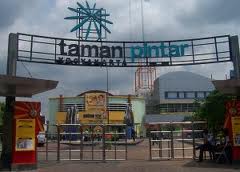 Yogyakarta or Jogja known as student city because many university-level education in the various regions so we can easily found it. For that, education is the main issue in this city. Local authority capture the need of it, and in 2003 they built Taman Pintar near fort Vredeburg complex as a means of expression, appreciation and creation in a fun atmosphere. The main object is to develop the interest of children and young people to science through imagination, trials, and games in order to obtain qualified human resources. This building inspire by the famous educational icon, Ki Hajar Dewantara, who said (in javanese) Niteni, Niroake, Nambahi means to understand, to follow, and to develop.
 Taman Pintar has hugh area with several section, they are: Playground:Welcoming and games area and also functionalized as public space. After entering the gate, we're greeted by water corridor with Peace Gong at the end of corridor. Gong is one of gamelan component, and this gong represent peacefull condition in Indonesia. We also can find some educational games such as Story-telling Pipe, Wishpering Plate, Tree House, Dancing Fountain, Water Corridor, Picturesque Village, Color Spectrum, Singing Wall, Pulley System, Shaking Bridge, Teeter, Sand Palace, Stone Forum, and Engklek (traditional javanese games). Heritage Building:This area is intend for pre-school and kindergarten. Completed with educational computers and interactive games to develop their skill and knowledge.. Oval Building:This area devided into Exhibition Zone, Exposure Zone, History Zone, and Science Zone. We can actually study in this area by read, listen, and interactive with existing tools. Kotak Building:It has three floors and the most complete zone in Taman Pintar. In 1st flor we can find exhibition area, audio visual chamber, kid's radio station, food court, and souvenir center. We can find basic science and its application in 2nd floor, such as My Country Indonesia, Science Bridge, Populer Technology, and Library. Top floor (3rd) consists of Science Laboratorium, Animation and TV, 3D Cinema Theatre, and Courses Class. Facility:- Interactive science tools - Exhibition and audio visual area - Food court - Mosque - Souvenir Shop - Information Center PS: Do not visit on Monday, they're close.
 Mount Merapi is one of the most active mount in the world. Since 1548, this mountain has erupted 68 times. This mountain located in 4 districts within 2 provinces. Mountain's slope in the south side included in the territory of Sleman District, Yogyakarta Province, the other side included in the territory of Central Java Province. They are Magelang District on the west side, Boyolali District on the noth and east side, and Klaten District on the southeast.
Eventhough this mountain is active, it never devoid of climbers and tourists to visit Gunung Merapi National Park in the height of 2,968 meters above sea level. The most dangerous thing about this mountain is the hot cloud that came out when its erupted, who has already taken so much lives. This cloud contains hot gas, volcanic ashes, and rocks comes with eruption, also known as Pyroclastic flow. Locals called it "Wedhus Gembel" or sheep, because of its shape. When it comes out, the temperature extremely high about 1,000 degree Celcius in top of mountain and about 600 degree Celcius below, and it has speed of lighting to decline from top of mountain, about 200 km/h. Its swept everything while descending from top mountain, trees, houses, even its caretaker "Mbah Maridjan" became victims of it. But, this eruption did not scare locals. They believed that the eruption is common natural phenomena and brought prosperity to them. Mount Merapi is the most popular climbing object, because of its view. Common and closest route is through north side from Selo, Boyolali District, Tlogolele village to be exact. This village located between Merapi mount and Merbabu mount. Through Selo, climbers will reach top of the mountain within 5 hours. There are alternatives routes, through Kaliurang in Sleman District (south side), Sawangan in Magelang District (nothwest), and Kemalang in Klaten District (southeast). Kaliurang route is more steep than the other and took at least 6-7 hours to reach the top of the mountain.  The typical product of this territory is salak fruit, and the most famous are salak Pondoh and salak Nglumut. This species can not grew in other places. If they forced to plant in other places, the fruit does not taste like original one. According to the farmer, whom i speak to, the unique taste of this fruit came from the soil. It contains ashes and sands that came out from mount Merapi. Beside farming, Merapi sand is also known to use as construction materials.
Yogyakarta or Jogja is almost as famous as Bali. It has beautifull landscape such as beaches and temples, also comes with lots of traditional stuff such as batik. One of the icon of Jogja is Malioboro, road which runs between train station (Tugu Station) up to the palace (Keraton). Along this road, we can find any souvenir shops, historic buildings, traditional market, hotels, restaurants, and malls. 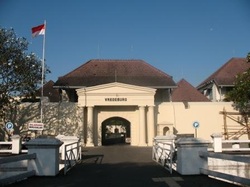 Fort Vredeburg is one of dutch heritage buildings in Jogja, located at south of Beringharjo. It was built in 1760 by Dutch Government in Keraton's land. This building was named Fort Rustenburg which mean castle resort. After earthquake in 1867, this fort was renovated and named Fort Vredeburg mean bastion of peace. Since 1760, this building has experienced various changes in the function. In 1760-1830 it become bastion, but it's all just strategy to observe Yogyakarta Sultanate and to prevent them from rebellion. In 1830-1945 serve as military base for Dutch and Japanese. Between 1945-1977 used as Indonesian military base and Bataliyon 403. On April 1985 this fort was developed into Perjuangan Museum and opened for public in 1987. Inside fort Vredeburg, there is bridge and trench, gate and guardhouse, barracks, warehouse, hall, and residences.
 We can found so many batik shops here, but if we want to feel the pleasure of shopping in traditional markets, we can visit Beringharjo market. Its located at the south area, before fort Vredeburg. This traditional market devided into 3 section, garments section, groceries section, and fresh market. At the garments section, we can find any kind of batik, from clothes, bed linens, curtain, tablecloth untill accessories. Its located at the west side of Beringharjo. Fresh market located at east side of Beringharjo, providing herbs, fruits, vegetables and household needs. Groceries section located between garment section and fresh market. We can find any make-up accessories, clothing accessories, carnival supplies, etc.
Semarang City is capital of Central Java. For local tourists, Semarang known as city of lumpia. Lumpia itself is some snack made from young bamboo combine with egg, meat (chicken or shrimp), and other kitchen herbs, wrapping with flour that made just as thin as paper. Beside lumpia, we can find soft spines Milkfish (Bandeng Presto), Wingko Babad, Moci cake, Tahu Pong, etc. Want to buy some of them? Try to locate Pandanaran Street, we can find them there.
Not just foods, Semarang also known for mistics tourism, such as Lawang Sewu or we can take a tour on old city of Semarang. Lawang Sewu located in the heart of Semarang City, it means A Thousand of Door, located on northeast of Tugu Muda. Its a former Nederlands-Indische Spoorweg Maatschappij office, and now it become preserve historic building. Lawang Sewu became a mistical tourism since there are sighting seen by people.
Tugu Muda is a statue to remember the 5 days battle between Netherland colonial against freedom fighters in Semarang. In the north side of Semarang, there is old city which explain how the living society back to Netherland invasion era. Its a heritage of Netherland colonial that local government tried to preserve this area and to maintain the condition of the buldings. One of them is Imanuel Church, also known as Blenduk Church, where chrisitian doing their cermonial until now. 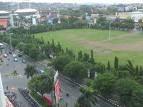 Icon of Semarang City is Simpang Lima. Its a field in the middle of cross-section in business area. Simpang Lima often used for concerts and other performances, and surrounded by hotels, malls, movie theatres, hospital, and mosque. On weekend, this area usually close to vehicles since people used to exercise in this area, such as jogging, bicycling, aerobic, badminton or just gathering around with family.
Semarang harbour called Tanjung Emas, located on north side of Semarang City. This harbour frequently visited by cruise ship and serves domestic and international shipping. Not so far from the harbour, there is a public beach called Pantai Marina with exhibition area in the west side of it.
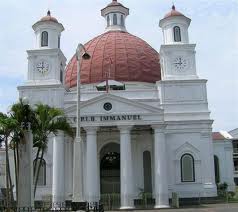 Blenduk Church In some areas of Semarang, it is almost possible to think you are in an old suburb of Amsterdam, not the capital of Central Java. We can find that location in North side of Semarang City where used to be trading area. It's home to many buildings dating back to the heyday of the Dutch East Indies Company (VOC) in the 17th and 18th centuries.
Unfortunately, this area seems to be abandoned by local authority since many onetime office buildings and banks in Semarang's Kota Lama (old city) are now dilapidated warehouses.
One of the exceptions is Immanuel Western Indonesia Protestant Church, also known as or "Blenduk" church, located at Jl. Letjen Suprapto 32. They called it "Blenduk" because the shape of the dome, its a Javanese word for an convex shape of the dome. This church was built in 1753, 75 years after the VOC extended its operation to Semarang.
The Church is distinguished from other buildings in Kota Lama. It features a unique façade divided vertically into three parts. On the ground floor of the building is almost the same level as the street in front of it, built on a brick base. The vaulted ceiling is covered with a layer of metal surrounded by teak beams. Metal roofs has been added to the structure in 1894, and there is a hole at the top to allow sunlight to filter in.
On the east coast, south and west of the church is a Roman-style portico with a saddle-shaped roof. The two towers on both sides creates an impression impressive, starting with a square base that gradually rounded top. A small domed roof is in place on top of each tower. The cornice around the building there is horizontal lines. The sophistication and uniqueness of the building can be seen in the front door, which is a double door of wood panels. The top of the door is curved like the church arched windows. There are two types of windows: double window with carvings (krepyak) and stained glass.
The Church is composed of wooden benches seat of woven rattan chairs and a wooden pulpit in the front. The old pipe organ was stopped after the last granted in 1975, since the repair costs are quite expensive and cannot be done in Semarang. The church has a large courtyard on the right side, where many leafy trees are growing and which are used in the parking lot of the church on Sunday.
Renovation has been continuing on this church. When it was built in 1753, it took the shape of a Javanese stilt house. In 1787, the church's architecture was changed, and seven years later more renovations were done. In 1894, the church was rebuilt by HPA de Wilde and W. Westmas and that style remains to this day. A plaque dedicated to de Wilde and Westmas can be found at the back of the pulpit. For the 250th anniversary, more renovations are underway, especially for the pews and walls.
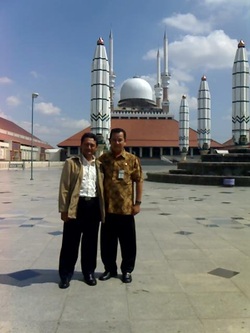 The Great Mosque (background) The Great Mosque of Central Java is a building that influence by The Mosque Nabawi in Medina, located in Street of Gajah Raya, District of Gayamsari, Semarang City. It was built on 2001 and finished in 2006 and spent at least 198.692.340.000 rupiahs. This is the second mosque with giant electronic umbrella after The Mosque Nabawi. This mosque standing in 10ha complex completed with many facilities, such as convention hall, office, spaces for rent, souvenir shop, cafe, library, and tower.
In the first place, this mosque hopefully could control economic social life which tend to wordly-minded. The President of Indonesia attending the opening ceremonial of 198.692.340.000 rupiahs mosque and sign the inscription plate on November 14th, 2006. This plate as high as 3.2 metres and 7.8 tons of weight, comes from Merapi Mount and carved by Nyoman M. Alim who built Borobudur miniature in Minimundus, Vienna, Austria (2001).
Main bulding of the mosque is 7,669m2 and 7,500m2 courtyard to accomodate approximately 15,000 people. There are 6 giant umbrella that can open or close electronically to protect against sun. The architecture of this mosque is a blend of Javanese architecture, Arabic and Greek.
Convention Hall that located in right wing can accomodate 2,000 people. In the left wing there is library (digitall library in the future) and spaces for rent. Besides of the place of worship to ALLAH SWT, this mosque is also providing tourism on religious stuff, education, and center of syiar of Islam. For that, this complex is completed with 23 rooms hotel to accomodate pilgrims.
Besides of the mosque, magnetism of this complex is Al Husna Tower located in southwest of the mosque. It represent the mightiness and supremacy of ALLAH SWT, so that it has height 99 meter as many as ALLAH's Name. DAIs Radio Station located in the ground floor of Al Husna Tower, and Islamic Culture Museum located in the second and third floor. Rotate Moslem Cafe is located in 18th floor and there is 5 binoculars on top floor (19th) to see Semarang City. Rukyatul Hilal, to see and located first moon, also conduct in top floor using Boscha binocular to determine 1st Ramadhan and 1st Eid.
|


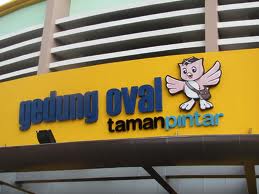





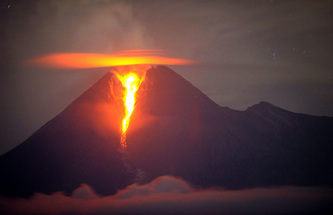
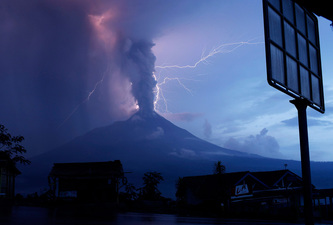
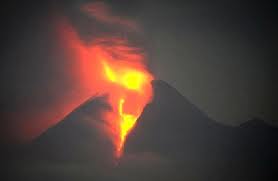
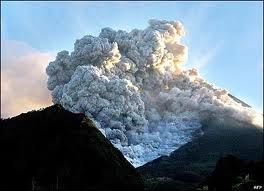








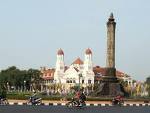
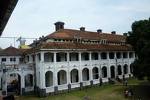



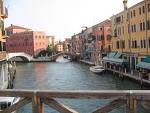



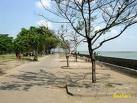






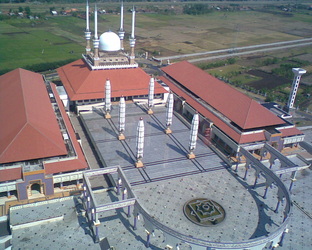
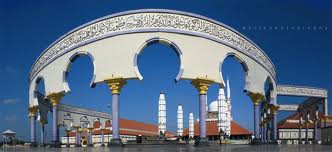
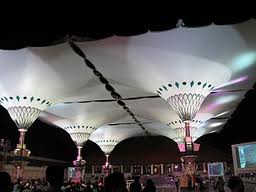

 RSS Feed
RSS Feed